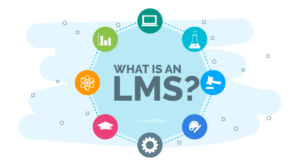How is it like Attending Online Classes in 2022?

The outbreak of one of the worst pandemics the world has even seen, viz. The COVID-19, signalled the beginning of a new epoch in digital technology, e-learning or online learning in other words, that disrupted physical learning at large. This disruption is due to the fact that nearly 77 million students have lost accessibility to education with schools closed indefinitely (UNICEF). Thanks to the continuous lockdowns that not only destroyed businesses, but also changed the very face of education.
Even as classes resume in many parts of the world, there is a situation wherein millions of students are heading into the fag end of school year without walking into the classroom even once in the past two years. In fact, the losses that students are likely to face as a result of schools closing indefinitely are irrecoverable, and that is a matter of concern for sure, according to most educators, edupreneurs and academicians globally.
Online learning is here to stay
Online learning therefore has turned out to be one of the hottest trends, picking up steam in this digital era. Its growth has been significantly high since the outbreak of the COVID-19 pandemic without any signs of slowing down. Also known as e-learning, more often than not, this remote learning mode does not occur in the physical environment and conventional classroom, where a physical tutor or teacher delivers, regulates and moderate the flow of information.
Education, be it in any form primary level, middle level, secondary level, college or university all have effectively optimized to leverage on this window of opportunity. The advantages of online learning are myriad: greater control, increased flexibility, improved time management, and enhanced self-motivation. On the flip side, the cons of e-learning include increased work for pupils, and it needs a lot of self-motivation and lesser social interface or interactions.
What will change in 2022?
So, what it’s like attending online classes for students in India this year. The rise of Edu technology through some of the largest learning platforms in India is transforming the way online learning is conducted and how knowledge is dissipated. For example, real-time meetings are a game-changer in which a cohort of students can join instantly and engage in group learning and discussion. There are many online teaching platforms for teachers in India which attract a lot of talents around the country in terms of tutoring and interactions with learners.
Research studies have repeatedly proved that online learning can improve information retention rate by ‘x’ times, and this factor is important from a learning perspective in the absence of a physical environment. Wherever a student has to clarify a topic or chapter, he or she can do it easily with or without the support of an online tutor or instructor. The largest learning platform in India (not just one, in fact) emerged a clear winner post-pandemic.
Though online examination and assessment systems were frowned upon by many educators pre-pandemic, a count of the number of online examinations, tests and assessments conducted online will give you an idea of the transformative power of online learning throughout the pandemic.
The advancement of online proctoring solutions ensures that a real person will invigilate your exam or test in real time via a webcam. Online proctoring is also useful in monitoring what is running on your system, quickly sharing your screen with the supervisor. Therefore, online learning platforms for students in India are here to stay and make windfall gains in the months to come!






